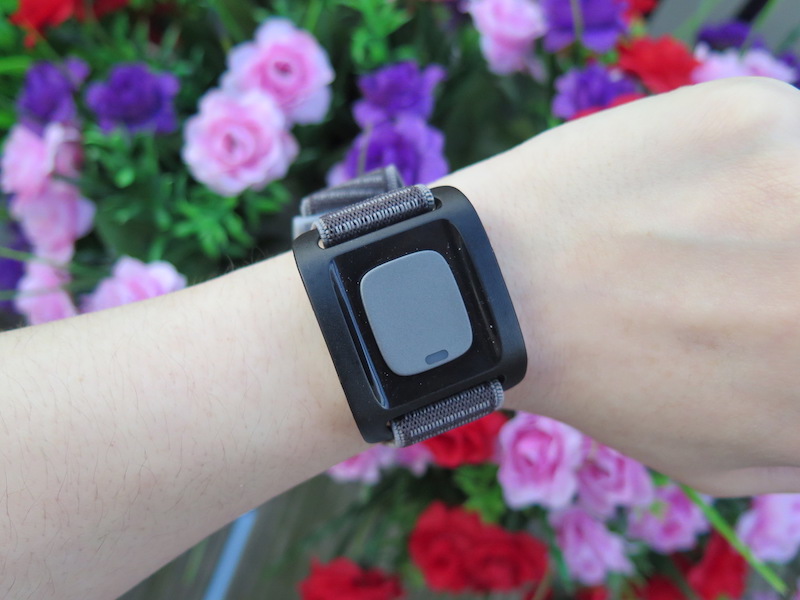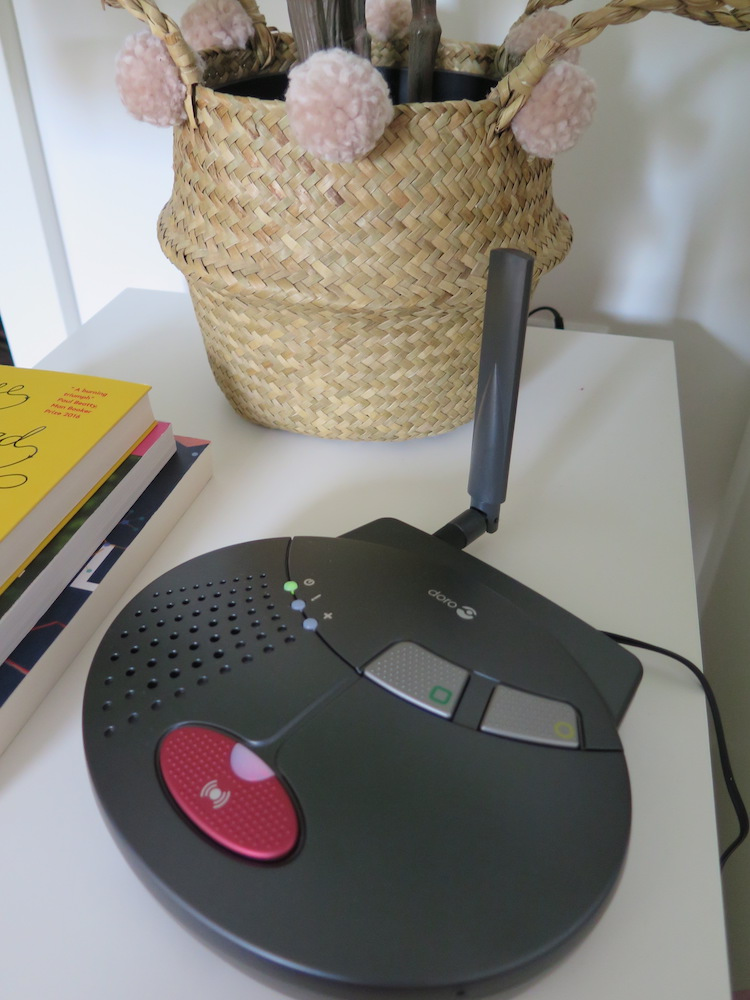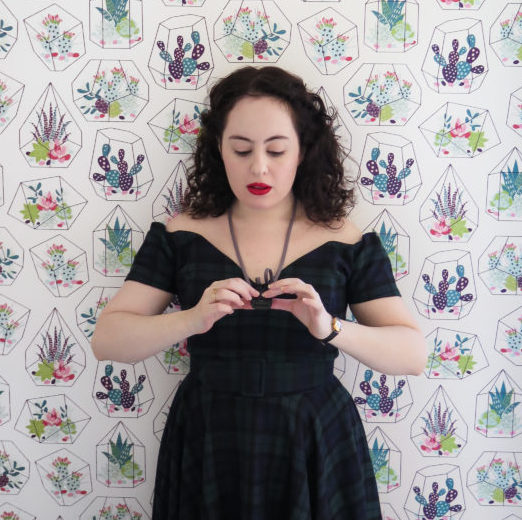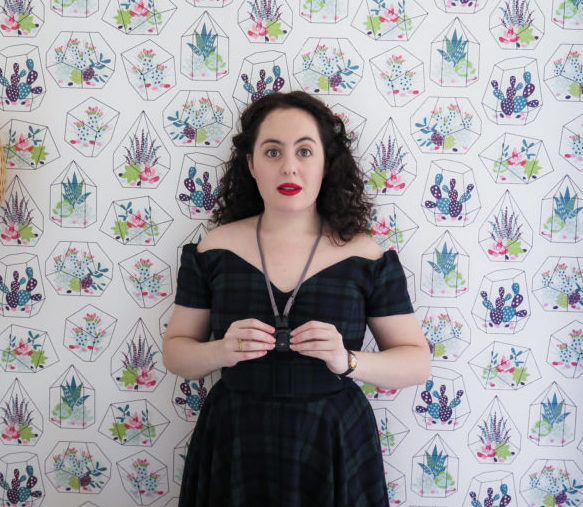One of the things I’d like to start doing more on this blog is reviewing products and services that are targeted at young people with chronic illness/disabilities to help others make an informed decision about things that may be a helpful addition to improve quality of life.
In today’s post, I’ll be reviewing the Welbeing personal alarm service. When the company reached out to me to ask if I’d be interested in reviewing their product, I was on the fence – as it was hard to imagine how it would realistically fit into my life.
But once I thought about it, I realised that I don’t move anywhere, even to my bathroom, without my phone in case I hurt myself (a reasonable assumption), and I started thinking about how it could be of benefit to me, especially during periods of time when I can be at home alone for days or weeks.
Full disclosure: I was sent a trial of the Welbeing personal alarm service in order to test it out. This review has been sponsored by the company, but as always will reflect my honest experiences and thoughts on the product.
Finding independence as a young person with chronic illness is an often challenging but vitally important thing. Making the decision to live alone was scary for me, and the only way I was able to do this was by moving as close as possible to my parents and being lucky that they’re still able to help out. I no longer live alone, but still require help, and live with a lot of anxiety when it comes to managing my day-to-day health at home.
In this review, I’ll provide information about the company, the product, and will be sharing my experiences alongside my thoughts on whether I think it could help someone with a chronic illness like mine with independence. I hope this helps you make a decision as to whether you think the Welbeing alarm could be right for you.
What is the Welbeing personal alarm service?
When I think of personal alarms, I think of my grandma – something that’s there for older people to use in case they fall. And whilst this is a very common way for the alarms to be used, part of the reason Welbing reached out to me and other younger bloggers is because they believe that it can be of benefit to anyone, no matter what age.
Going into this, my biggest question was: why would I use this when I have my mobile? As I mentioned above, I literally carry my phone every single time I leave my bed, even if it’s for a few steps to the bathroom, just in case I do hurt myself. If I’m in the bath, it’s always angled I have it on the side of the bath just in case I slip. So I was intrigued to see whether this would change my behaviour at home and whether it was something that I would get good use from.
Welbeing says their alarm service can be helpful for people who:
- live alone and/or at risk of falling or in need of reassurance
- are living with dementia, epilepsy, heart disease or domestic violence
- have a disability or long term condition
- have recently returned from hospital or have a short term condition
- are vulnerable and worried about safety or security
The service is available 24 hours a day, 7 days a week, 365 days a year. I’ll talk more a bit later about the ways in which the service can be used – and I was surprised to learn that it’s not just for emergencies.
The service costs from £15.96 a month and you can set up a monthly or yearly payment plan (with a 3 month and 12 month payment upfront respectively), the set-up fee is £20 and they offer a VAT reduction for disabled people. You can see more information here.

What’s in the box?
Setting up the alarm was incredibly easy. I had to fill in some information online, and a few days later it arrived. I don’t have a landline, so received what looked a wifi router, the alarm button (which they call the pendent – and a bracelet clip and cord necklace if I wanted to wear it around my neck) and instructions for set up.
At first I got confused because the instructions said that the sim card would be in the box and it wasn’t, but it turned out it had already been installed, and all I needed to do was plug it in and then press the button a button to be put through to the call centre to finish my set up.
I had the alarm plugged next to my dressing table and I was halfway across the room in my bed.
There were a couple of rings and then few (very loud) beeps before I was quickly connected to a very friendly woman who answered me by name. Unfortunately, during this time the signal was quite bad so she had to call my mobile in order to finish getting my information. This is something I tested a few times later and didn’t experience the same problem.
We went through basic information, confirming my name, address, date of birth, the contact information for whoever I wanted them to be able to get in touch with on my behalf, asked whether I had somewhere a key was kept in case they needed to send someone to come and help, etc.
I then had the opportunity to ask her some more questions about the service itself, which I will go into detail a little bit further down this post.
The pendent
The wearable alarm button, or the pendent as it’s officially called, can be worn on the wrist or around the neck on a cord. It reminds me of the emergency alarm button my grandma used to wear, and whilst it’s definitely sleeker and more discreet than the one she had, not much seems to have changed. It’s extremely easy to use, with a single button that you press to activate the call, that lights up green to confirm the connection.
I would have chosen to wear it around my wrist. Whilst it’s not the most aesthetically pleasing in a grey material (even some different options for wrist straps would have been preferable), it’s pretty slimline and non-invasive enough that it could be seen like a really basic exercise wearable and I don’t think anyone would have recognised it as an alarm.

However, I have skin that is sensitive to certain fabrics (and things that bother me don’t bother most other people I know!), and found the material on the bracelet strap really uncomfortable, leaning towards painful to wear on my wrist, which is a shame as it’s where I would have naturally chosen to wear it.
As far as I can tell, the material for the neck cord is the same, but it is thinner and therefore less invasive, but was still a tad uncomfortable for me. However, with the clothes I wear at home, my skin is often exposed so it wasn’t great there either. So I kept it next to me when in bed, and only put it on when necessary. In the winter this wouldn’t be so much of a problem because of the thick fabrics I wear.
If wearing it around the neck, you’re also provided with a protective plastic cover, which is incredibly helpful if you want to wear it when having a bath or a shower – the place in my home that causes me the most anxiety.
When can the alarm be used?
It turns out that the alarm can be used for more than just a falling emergency – it’s for any kind of assistance, from big to the small.
For example, if I was in bed, out of reach of my phone and couldn’t get up and needed some help to move and some food brought over, they could help with that. Or, on the more drastic side, if I’d fallen, they could call my mum for me and get an ambulance to come. Or if I had a carer who hadn’t shown up, they can do the chasing to see where they are.
I was told that if I pressed the pendent and Welbeing couldn’t hear me because I was too far away from the machine, they would try calling on my mobile to see if I needed any help or if it was a false alarm, before escalating to my emergency contact (my mum) to see if she could pop over to check on me. If they couldn’t get hold of her, they would escalate to an ambulance.

Because the speaker works from a specific device – you have to be relatively close to it in order to be heard. However, I’ve been in large rooms and used it, and there was no problem. But it’s worth noting that this is an in-home device.
My experience (and some thoughts from Mummy Natasha)
As I mentioned at the beginning, the main question I wanted to answer was ‘will I use this when I have my mobile’, and for the most part I have been managing relatively well over the last few weeks – there were no real emergency incidents (always a good thing!) and I’ve mostly had access to my phone or my laptop to get in touch for help when I needed it.
With that being said, I found myself being able to leave my phone out of my bed, and not carrying it with me every time I went to the bathroom – giving me a sense of security, lessening my anxiety, and making me feel generally less concerned about an everyday activity.
I did, however, use the alarm a couple of times, and I have to say that I was honestly quite surprised at how weirdly reassuring it felt to know that there was something in place to make sure I’d get support if and when I needed it – it’s like having an on-call PA in many ways. The connection does take longer than if I was calling somewhere directly myself, but that’s not always feasible, and that’s when I would use the alarm.
The first time I called, I was in bed, I’d left my phone in the other room and I was too fatigued to get up and ask for my mum to bring some food because I didn’t have anything that didn’t require cooking. I pressed the button, it rang a couple of times, and then there were several loud beeps. It took about a minute to be connected to a person, but yet again she was extremely helpful, listened to me carefully before putting me on hold, called my mum and told me she’d been in contact and said she’d be with me in the next half an hour and that she hoped I’d feel full soon.
As I mentioned above, I was surprised at how reassuring this felt, as it wasn’t something that I was expecting and I can definitely imagine how much this would have helped when I was living alone.
When my mum came over, we had a chat about the service and she was extremely impressed with it and talked about how it has made her feel more confident as a mother, knowing that was there just in case.
She actually said she worries about when I don’t have my phone near me – and I think for her, the alarm served the same purpose as it did for my grandma – peace of mind. I was surprised to hear her say this, but it makes sense.
The second time went just as smoothly, and when I had a handful of ‘false alarm’ incidents, the staff were all kind about it. Interestingly, I had unplugged my alarm at the end of my testing period and moved it into the living room, and I woke up to a couple of missed calls from an unknown number and a text from my mum checking that I was ok – they’d noticed that my alarm wasn’t connected and called mum to check in on me to make sure that I was ok.
I think there was definitely a mental block to get over with feeling as though I was making a big deal out of something small or asking for too much when I had someone call for help using a service with something like food during a high fatigue time or when I hurt myself. But that’s definitely one of those ‘not wanting to be a burden’ insecurity things that many of us have to contend with when living with chronic illness. If anything, it turns out, far from being a burden, my mum actually found it even more reassuring.
One thing I will say, however, is that loud beeping noises continue throughout the call (I asked about this and it’s because they use a kinda walkie talkie system) which could be a problem for people experiencing fatigue and migraines and did become a bit grating for me over time.

Final Thoughts
So, would I recommend the Welbeing personal alarm service? As with many products, I think it depends on your situation. But I have to say that overall, I’m extremely impressed and I can see how it could be of huge benefit to people who need a bit of extra support at home and could help people feel safer and more secure when seeking independence with chronic illness.
As I mentioned above, there was definitely an ‘insecurity curve’ with the product for me – either holding off on calling for help or pushing through as I usually do because I still had the impression of an ’emergency’ alarm in my head and it took a while for me to accept that it could be used for other purposes. But once I did use it, it really clicked how much it could have helped me when I lived alone.
I was genuinely surprised at how reassured I felt, and my mum raves about how much it could have helped me when I lived alone, and I think it was a big weight off her shoulders. I just wish the fabric was different, as it meant that I didn’t actually feel comfortable *wearing* the device as often as I’d have liked to, and that the connection itself was sometimes a bit quieter.
Is it something that I think I’d use regularly right now? Probably not – I no longer live alone and for the next few months at least, I’ll have someone at home with me most of the time. But if there were periods of time where I was home alone for a longer stretch, I’d absolutely consider using the alarm for peace of mind.
Thank you so much to Welbeing for sponsoring this post. If you’re interested in finding out more about their personal alarm service, you can click here to visit their website and find them on Twitter and Facebook.
If you found this review helpful, please subscribe to my newsletter!


Natasha, that was a great idea that you got the alarm in case you fall and you call somebody to help you in case of emergency. I am glad that you are having somebody stay in the house with you to help you if you have an accident.
Thank you, Silvia!